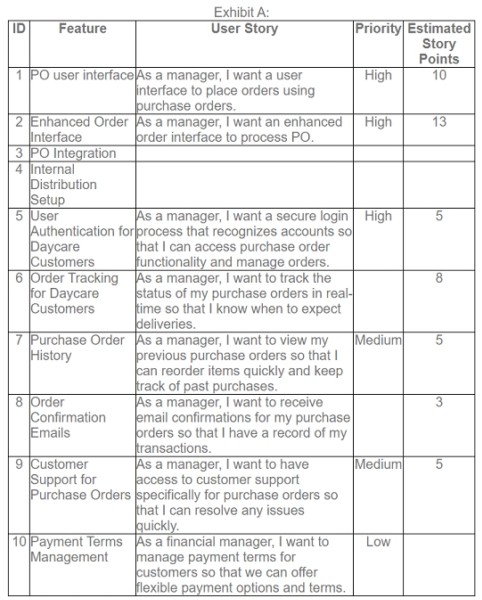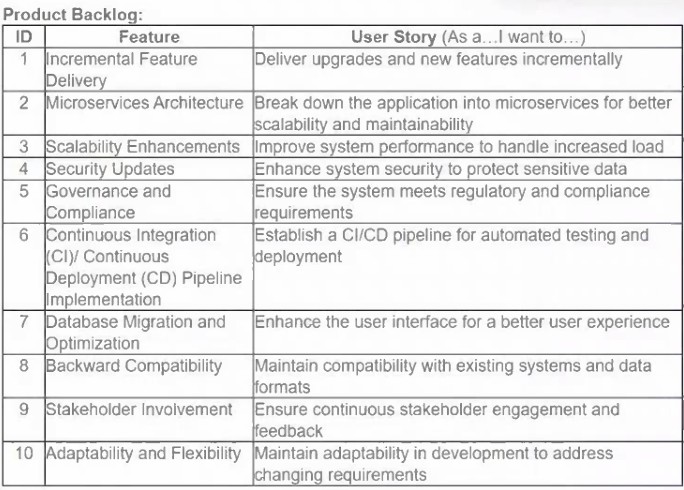PMI PMI-200 - PMI Agile Certified Practitioner (PMI-ACP)

A food company seeks additional business-to-business (B2B) revenues from some customers by
implementing purchase order (PO) functionality. To achieve this, the agile project team is exploring PO integration options (see item #3 in Exhibit A), as the product increment (PI) planning process is underway.
What should the project team do next?
During a project's last few sprints, an agile practitioner notices an increase in defects. A root-cause analysis indicates that a poor understanding of the requirements was caused by the inability of the product owner to communicate clearly.
What should the agile practitioner do?
A project manager was assigned to lead the development of a new application for a company. The application will be widely used by all company employees around the world. During the firstmeeting with key project stakeholders, the project manager was asked to find a way to determinate all possible types of users who may interact with the application that is going to be developed.
What should the project manager do next?
An agile team provides feedback that user stories include insufficient details to understand the requirements. What should the agile practitioner do?
What can an agile team use to prioritize stories?
A new agile project manager accepts an assignment to manage a well-established team Many team members have worked together on this product for several years During a meeting, the project manager notices that team members offer little vocal interaction, yet all required tasks are completed on time
What type of behavior does this describe?
An agile project was underway for two months and delivered the expected value to the stakeholders. However, during a sprint review, a team member complained that the product owner constantly changes requirements and the member feels that this is blocking the team’s performance.
How can the scrum master handle this situation?
During a recent sprint review meeting with stakeholders, the product owner received detailed feedback indicating the critical changes needed for upgrading the legacy system to better align with the latest technologies and user needs. How should the product owner help ensure the product backlog is effectively managed, while helping the team remain focused? (Refer to the Product Backlog Exhibit)

A Scrum team decided to switch to Kanban for the maintenance phase of the product. The kanban board consists of the following columns "To do," "In progress," "Ready to be tested," "Test in progress," and "Done." Since the team changed their way of working, they have noticed the work is flowing slower in the system. A large queue of "Ready to be tested" work items has been building up.
What should the team do to improve its speed of delivery?
A Scrum team decided to switch to Kanban for the maintenance phase of the product. The kanban board consists of the following columns "To do," "In progress," "Ready to be tested," "Test in progress," and "Done." Since the team changed their way of working, they have noticed the work is flowing slower in the system. A large queue of "Ready to be tested" work items has been building up.
What should the team do to improve its speed of delivery?
A member of a project's development team approaches the team lead and requests database administrator training. The team member believes that their inability to handle this work, and to rely on outside specialists, is impacting team velocity.
What should the agile team lead do?



 Assess dependencies and integration requirements more effectively.
Assess dependencies and integration requirements more effectively. Prioritize and deliver in smaller, testable increments.
Prioritize and deliver in smaller, testable increments. Improve estimation accuracy using techniques like planning poker.
Improve estimation accuracy using techniques like planning poker. Ensure alignment with agile principles of incremental and iterative delivery.
Ensure alignment with agile principles of incremental and iterative delivery.